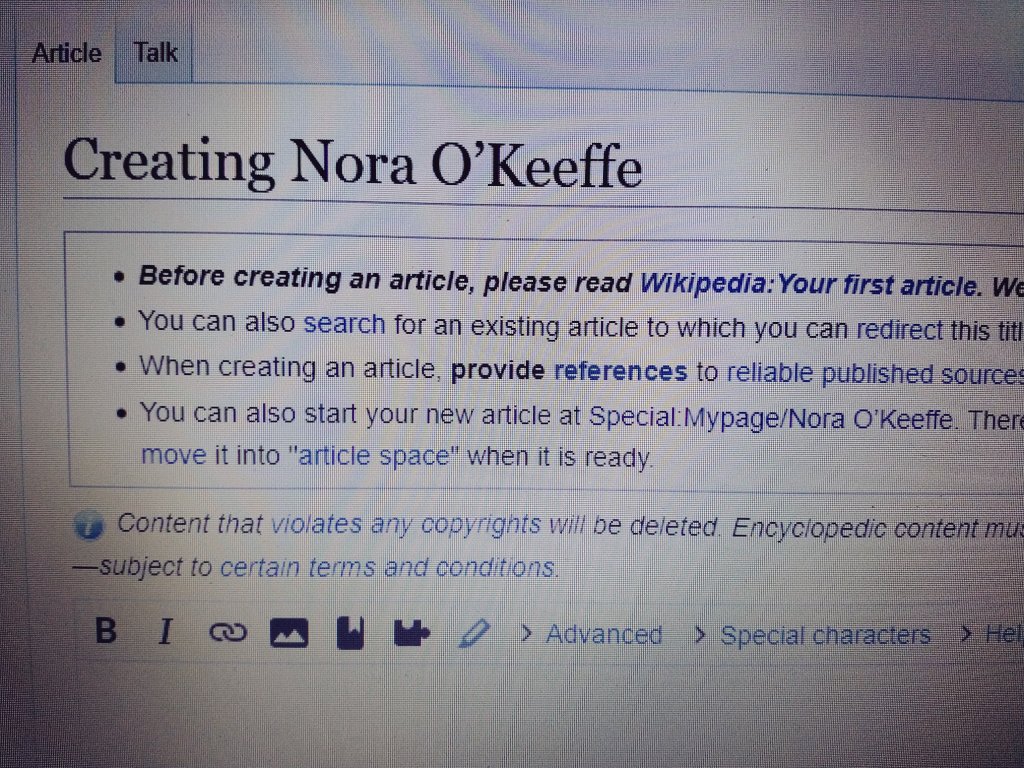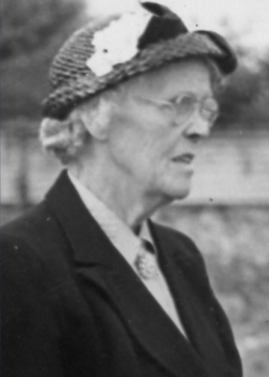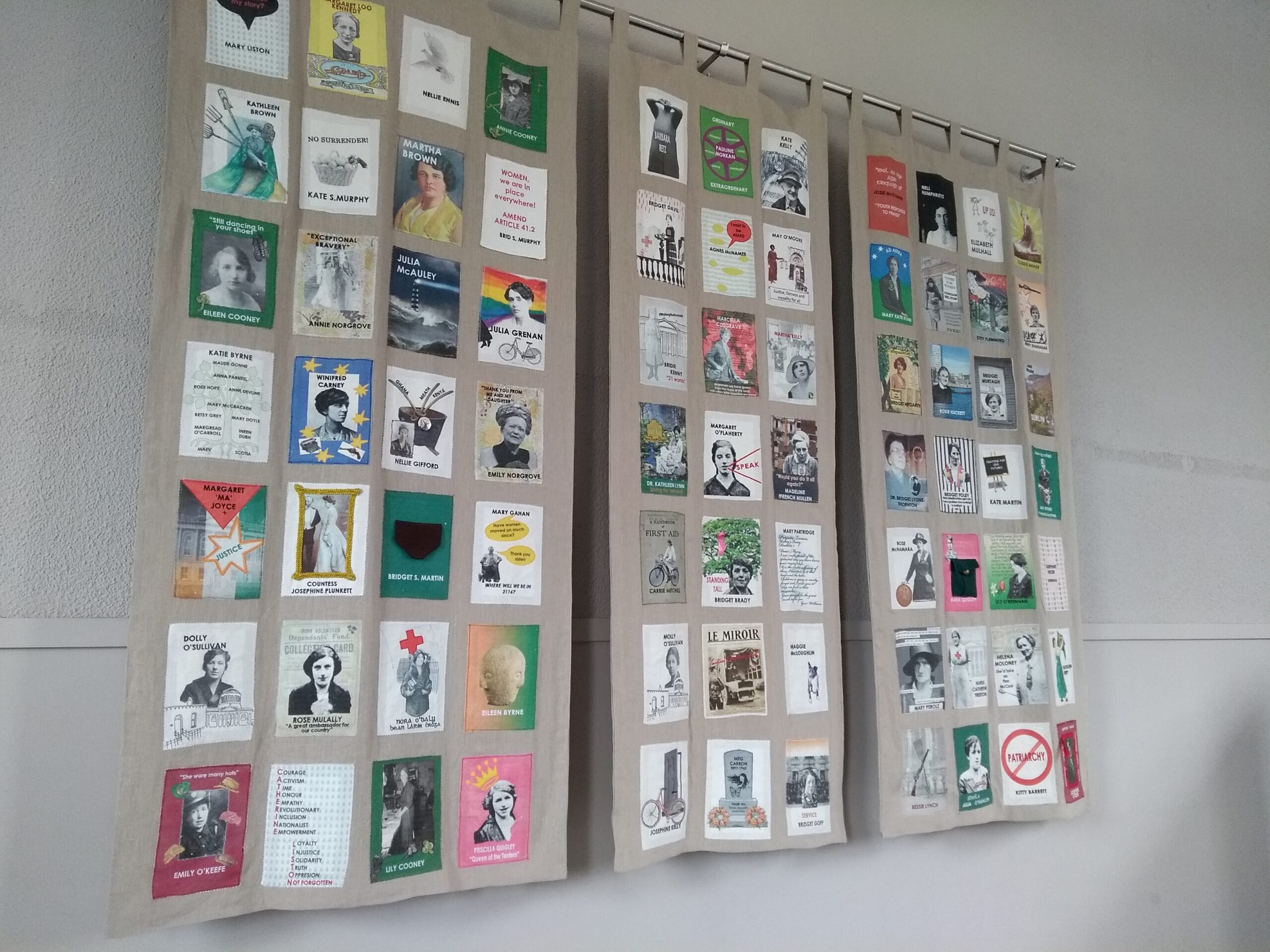Creating Nora: a reflection on Women’s History Month
This post includes content from previously published Twitter threads on @thewildgees during March 2021
For Women’s History Month 2021, we committed ourselves to bringing some women in red to life. Some hero editors manage a Wikipedia article a day but we aimed for a more achievable one a week. Kicking off on International Women’s Day, we created a page for Nora O’Keeffe – revolutionary, feminist, Cumann na mBan organiser and other half of Wild Gees fav Margaret Skinnider. Nora was a woman in red – meaning she was mentioned in other people’s articles but had no page of her own so links to her name showed as red – and we turned her blue.

Nora was “one of the most notorious despatch [sic] riders” during the War of Independence, travelling around the country with messages between republican leaders. She and Margaret ran a safe house in Clontarf, hiding people on the run from the authorities. During the Civil War she was a skilled propagandist for the anti-Treaty side and was arrested by Treaty forces. After the war, she and Skinnider raged against the increasingly patriarchal state as women’s rights were eroded by law and constitution. The theocratic free state was a far cry from the egalitarian republic they had fought for.
Our second article was about Nell Ryan, who had been a bit overlooked due to her family of revolutionary over-achievers but we thought her story was worth telling in its own right. Nationalist, Cumann mBan organiser, 1916 prisoner, hunger striker, first woman elected to Wexford County Council. Seán T Ó’Ceallaigh, later President of Ireland, described Nell as a “friend and confidant of practically every leader in the republican movement”. And he should know – he married two (2!) of her sisters.

Her fascinating family, the Ryans of Tomcoole, were ridiculously well-connected. They were all members of and/or married to big players in 1916, the War of Independence, Civil War, the Free State government and even presidents of Ireland. Some of her siblings had Wiki pages already but they didn’t link to other family members or refer to their republican connections in the same way we wrote about them in Nell’s. It seems to us that it’s an important part of their story.
Nell was one of the 77 women arrested after the Easter Rising and detained at Richmond Barracks in Dublin.
Next to join Wikipedia was Nora O’Daly. Nora was also one of the 77 women arrested and another member of Cumann na mBan. Nora delivered first aid in the College of Surgeons during the Rising and treated Margaret Skinnider’s wounds when she was shot. Nora ran a safe house during the War of Independence and was known as a “dangerous woman” by the Black and Tans. She was a judge in the Dáil Courts and later joined IWWU to fight for women workers’ rights. Nora also apparently wrote poetry and prose. We’d love to find some and include it in her biography but only have links to some of the factual accounts she wrote.
One of the things that struck us in all these biographies is how interconnected the people involved in the revolutionary period were. Some, like Nell, came from Republican families, while others had better known partners (Nora O’K) and in-laws (Nora O’D). There’s some fascinating personal histories involved here. Nora O’Daly and her sister Daisy were married to two brothers from the Irish Volunteers in a joint ceremony. Her brother in law Paddy Daly was the only one of the four of them to have a Wikipedia page and it didn’t mention any of this. It linked to his second wife, Bridget Murtagh, another Cumann na mBan member, but not Daisy or his subsequent spouse Norah – who was Daisy’s niece. That’s right, Paddy was married three times (widowed twice). That was certainly unusual at the time but his editor either hadn’t come across it in their research or didn’t think it was worth mentioning. Don’t worry, we’ve amended it now but it strikes us that having women editing and researching means that even men’s stories are enriched.
Another thing about that era of history is that people tended not to use their given names, which makes it tricky to make sure that your sources refer to the same person. Both Noras often used the Irish version of their names (Ní Chaoimh and Ní Dalaigh), which was fairly common among nationalists at the time. Nell (sometimes Nelly) was born Ellen, which is relatively straightforward, but her sisters Mary Kate and Mary Josephine went by Kit and Min respectively.
We first encountered Nell and Nora O’D at the 77 women commemoration quilt, part of the 1916 exhibition at Richmond Barracks, on our first Wild Gees trip (Nora O’Keeffe isn’t on it as she was still in the US at the time of the Rising). The quilt was created by The Yarn School in Dublin 8 with women from the local community as part of the Barracks’ 1916 commemorations. We found it and the stories it represented really moving.
As there was a bit of a revolutionary theme in the articles we wrote this month, some inspired by the 77 women quilt, we decided the quilt needed an article of its own. Which it did, but it also gave us the excuse to brag about adding 77 women to Wikipedia!
It’s striking how many other women turn up when you start digging into one woman’s history. All three of our articles this month were members of Cumann na mBan, and their stories involves other Cumann members who don’t have their own page yet. We’ve added three women to the Wikipedia Cumann na mBan members page but there are only 67 listed of the many hundreds of women who played an active role in the organisation and Ireland’s revolutionary period.
So turning a woman blue on Wikipedia usually means adding more women in red. This month we added red links for Kitty Costello, Annie O’Neill, Marie Perotz-Flanagan, Bríd Foley, Bridget Murtagh and Bridie O’Mullane – though a fellow editor very quickly turned Bridie blue! Another editor had found and added a photo to Nell’s page within hours of us publishing it. There are still too many stories of women’s articles being flagged and removed by Wikipedia editors for not being ‘notable’ enough but the Irish Wikimedia community, in our experience, is a lovely, supportive place for women.
One of the reasons women aren’t considered notable is often down to the lack of secondary sources (books, journals, news articles) about them. It wouldn’t be possible for us to create these pages if we didn’t have reliable sources to draw on, so we have to give a massive shout out to historians like Mary McAuliffe, Liz Gillis and others who have done such a fantastic job of uncovering the 77 women’s stories for the Decade of Commemorations. The centenary could so easily have been a revolutionary sausage-fest if it wasn’t for their work.
Still, some people seem determined to only tell the ‘his’ story of that period. Within days of Women’s History Month ending, the Kerry Writers Museum announced an all-male line-up for its War of Independence lecture series. It’s not like they would have struggled to find a female historian from Kerry either, as Mary McAuliffe hails from the kingdom.
To counter the omitting of women from history, let’s meet a woman who literally wrote the (history) book. Margaret Anna Cusack aka Sr Mary Francis Clare aka The Nun of Kenmare published The Illustrated History of Ireland in 1875. She also helpfully wrote her autobiography so we know loads about her – and we didn’t have to write her Wikipedia page!
Her Illustrated History was written in response to an English (male) historian’s “falsification of Irish history”. Mr Froude was apparently a fan of Cromwell and Henry VIII so tried “to blacken the character of Ireland’s best and noble sons”. Margaret disapproved and made no bones about it. She said of him “it might be supposed that the…facts of England’s wife-slaying monarch would be sufficient to deter anyone from the task of rehabilitating his character. But Mr Froude is not easily deterred”. If she was around today Margaret’s twitter would be fire!
We discovered Margaret through Clodagh Finn’s book Through Her Eyes – a new history of Ireland in 21 women. Clodagh is another writer bringing forgotten women, including trans and intersex stories, to light. We like to think that our own wee efforts on Wikipedia, Twitter and the Wild Gees blog help create more awareness of women like Nora, Nell and, em, other Nora. This Women’s History Month appears to have been brought to you by the letter N. We promise we’ll branch out in the alphabet for future articles.
Bibliography
Margaret Anna Cusack (1875). An Illustrated History of Ireland.
Clodagh Finn (2019). Through Her Eyes – A New History of Ireland in 21 Women. Gill Books.
Liz Gillis (2016). Women of the Irish Revolution. Mercier Press.
McAuliffe, Mary (2020). Margaret Skinnider. UCD Press.
Mary McAuliffe and Liz Gillis (2016). Richmond Barracks 1916. We Were There: 77 Women of the Easter Rising. Dublin City Council.

